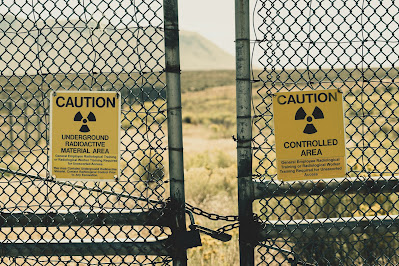For many years, graffiti was viewed as nothing more than an eyesore, a blight on the urban landscape that was associated with crime and vandalism. However, over the last few decades, the perception of graffiti and street art has undergone a radical shift. Today, street art and graffiti are widely recognized as legitimate forms of artistic expression that can transform our cities and towns in profound and positive ways. In this article, we will explore the cultural significance of street art and graffiti in urban environments.
What is Street Art?
The concept of street art includes not only unsanctioned designs like graffiti but commissioned works like sculpture, lighting displays, and wall murals. Street art is said to have developed from graffiti, found on buildings, overpasses, and other public spaces. Used as a form of self-expression and specifically including writing and personal identification, graffiti art can be broken down to its most basic parts by the explanation that it is one-part message (note the use of wording) and one-part aggression (in the use of others’ property for expression) . As graffiti took hold, it slowly became recognized as art. Once a method is appreciated for its artistic value, a new circle of artists arises, and the art form evolves. Nowadays, street art is not only spray paint – or a ‘teen crime’; it takes many forms and uses various techniques.
The Rise of Street Art
Street art has become increasingly popular in recent years, with artists from all over the world creating stunning works of art in public spaces. One of the reasons for this rise in popularity is the fact that street art is often seen as a way to reclaim public spaces that have been neglected or abandoned. By transforming these spaces into works of art, street artists are able to breathe new life into them and create a sense of community pride.
Another advantage of street art is that it can create a sense of place and identity in urban areas. Murals and graffiti can provide a visual representation of the history, culture, and values of a community. They can also serve as a way to express political and social messages, giving voice to those who might not otherwise be heard.
The Cultural Significance of Street Art
Street art has become an important part of the cultural landscape in many cities around the world. It has the power to transform the way we think about public spaces and the role of art in society. Here are some of the ways in which street art is culturally significant:
1. It Provides a Platform for Self-Expression
Street art provides a platform for artists to express themselves in a way that is not always possible in traditional art forms. It allows them to create works of art that are accessible to everyone, regardless of their social or economic status. This democratization of art is an important aspect of street art's cultural significance.
2. It Challenges the Status Quo
Street art has the power to challenge the status quo and question the dominant narratives of our society. It can be used to express dissent and to give voice to marginalized communities. By doing so, it can help to create a more inclusive and diverse cultural landscape.
3. It Creates a Sense of Place and Identity
As mentioned earlier, street art can create a sense of place and identity in urban areas. It can help to define the character of a neighborhood or community and give it a unique identity. This can be especially important in areas that have been neglected or abandoned, as street art can help to revitalize these spaces and create a sense of community pride.
4. It Promotes Social and Political Messages
Street art can be used to promote social and political messages, giving voice to those who might not otherwise be heard. It can be a powerful tool for activism and social change, helping to raise awareness of important issues and spark public debate.
5. It Encourages Creativity and Innovation
Street art encourages creativity and innovation, both in the artists who create it and in the communities that engage with it. It can inspire people to think differently about the world around them and to see the potential for beauty and creativity in unexpected places.
Challenges Associated with Street Art
Of course, there are also challenges associated with street art. Some people still view graffiti as a form of vandalism, and there are concerns that it can lead to an increase in crime and other social problems. However, research has shown that this is not the case. In fact, areas with high levels of street art tend to experience lower levels of crime and vandalism than areas without street art.
Another challenge associated with street art is the fact that it is often temporary. Many works of street art are painted over or removed by authorities, which can be frustrating for both the artists who create them and the communities that engage with them. However, this transience is also part of what makes street art so special. It is a reminder that art does not have to be permanent to be meaningful.
In conclusion, the rise of street art has transformed our urban landscapes in countless positive ways. Street art has the power to turn neglected areas into vibrant and dynamic spaces, to promote social and political messages, and to encourage creativity and innovation. It is an important part of the cultural landscape in many cities around the world, and it has the potential to continue to shape our cities and towns for years to come.
Citations:
[1] https://www.smartcitiesdive.com/ex/sustainablecitiescollective/urban-street-art-fostering-innovation-cities/212816/
[2] https://www.urbanpunkz.com/the-rise-of-street-art-how-graffiti-is-transforming-urban-landscapes/
[3] https://www.sybariscollection.com/urban-art-and-street-art-whats-the-difference/
[4] https://www.ucl.ac.uk/bartlett/development/sites/bartlett/files/migrated-files/WP_182_Claire_Malaika_T_June_0.pdf
[5] https://www.kooness.com/posts/magazine/urban-art-street-art
[6] https://cooltourspain.com/urban-art-street/











Comments
Post a Comment